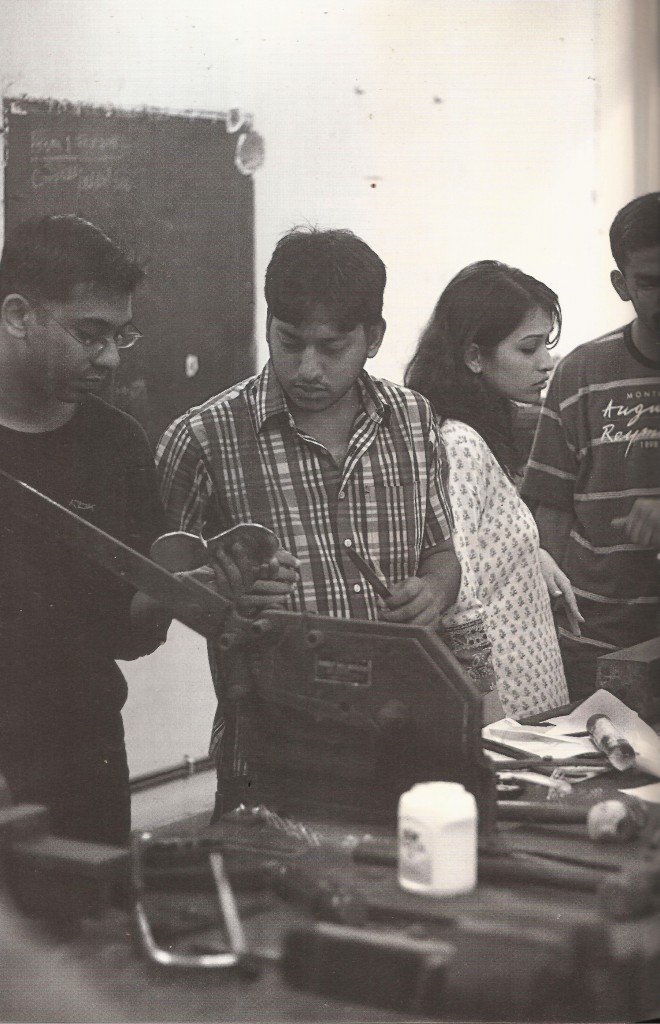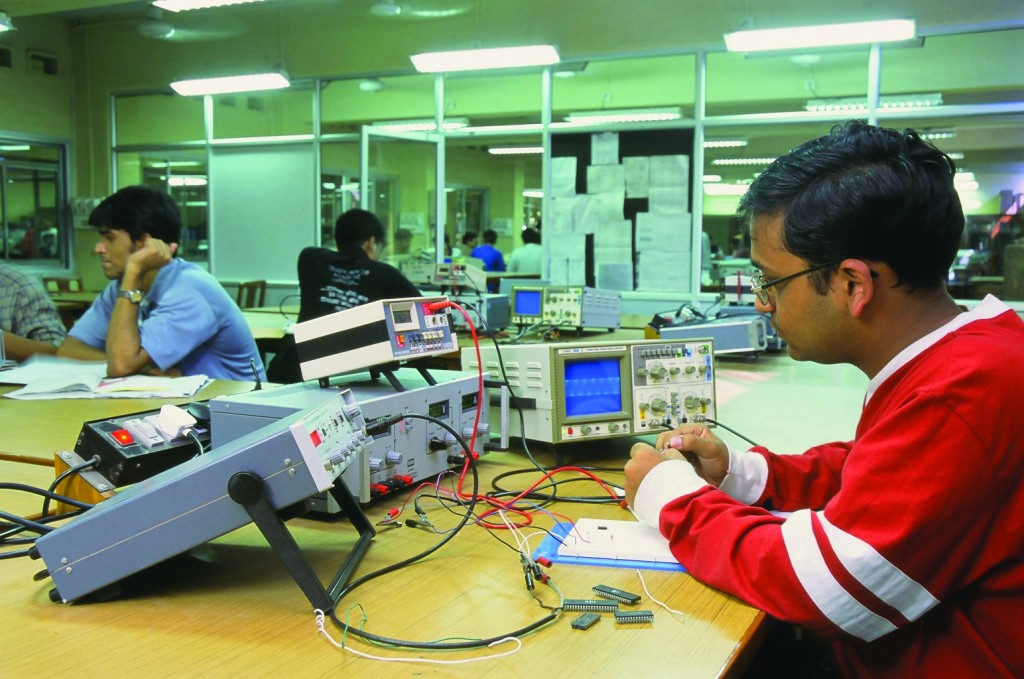It all started with a list- a list of the world’s top universities. And it ended with another list- a list of 133 donors from the Class of 2002 who gave generously to their beloved institute. This is the story of everything that happened in between. Well, to be less dramatic, the story of ‘Class of 2002 Legacy Project’ and the fundraising campaign that made it possible.
Back in the 1950s, our founding fathers set up higher institutes of technical education to facilitate the industrial development of the nation. The IITs were thus established with the vision, and the mandate, to provide world-class education in engineering and technology and to create the future leaders who will bring about an industrial revolution for the betterment of the society and improve the lives of the millions of Indians.
The IITs did partly achieve their objectives. Its graduates stand tall among the best in the world, and one cannot help but admire the countless number of IITians who have played a prominent role in creating innovative technologies, from San Francisco to Sydney. But, therein lies a problem. Even a preliminary survey would reveal that a disproportionately large number of these stalwarts have done their best work outside of India. The jury is still out on exactly how much India has benefited, directly or indirectly, from IIT graduates. But one thing is certain- for a large part of their existence, the IITs were plagued by, among other things, the difficult economic situation in the country and lack of good opportunities for its graduates. The result was arguably the biggest brain drain the world has ever seen, probably matching the exodus of scientists from Germany during the early 20th century, albeit for very different reasons!
At the turn of the century, India evolved itself with the economic reforms and the opening of the markets. The economic situation improved dramatically and more opportunities were available to IITians within the country. But this brought with itself a new set of changes, where the young and the brightest are attracted towards the more lucrative IT and banking sectors, instead of engineering and technology. This has, in turn, affected the quality of technology innovations coming out of the IITs. It is not a surprise that the other Asian technical institutions, who were in a similar or worse state only a couple of decades ago, are now widely considered as more innovative.
This is was opportunity. This is where our Legacy Project came in. We would provide support, financial and otherwise, to develop prototypes and enable ideas to become a reality.
And then came the list. In 2013, the QS World University Rankings put IIT Bombay at number 233. Number 233! How’s that for a reality check? What does that say about us all along thinking we were the best in the world? Quite a damper it was.
When the IITB Class of 2002 met for the first ever “Decennial” reunion in 2012, we all felt quite strongly about the lack of quality innovation at IIT Bombay. We all loved science and technology, but many had drifted away for various reasons, some of which are highlighted above. However, an “itch for creativity” still existed in many of us. Life for us is quite different after ten years post graduation, but we believed that it’s “not too late” for the young budding engineers currently at IITB. It was apparent that if we had better exposure to a culture of innovation during our days at insti, things would have turned out differently career wise, so-to-speak. Therefore, we decided to take some action and the ‘Class of 2002 Legacy Project’ was born!
The idea was simple- we would launch a project to stimulate innovation in engineering and technology at IITB, by financially supporting projects that develop new and innovative prototypes and fostering an environment of entrepreneurship through mentoring and guidance. And, we would put our money where our mouth is! Now, if only raising money were that easy! But more about that later. There were other urgent issues to tackle first.
If you’ve been following so far, you probably see the problem. How do you go to the IITB officials and basically tell them that they are not doing their jobs and so you’ve decided to intervene? Good luck with that! Not that that’s what we were trying to say (probably), but it sure was interpreted thus. There were a lot of questions, criticism, suggestions, and criticism disguised as suggestions! We were told, “Your small project cannot make a meaningful difference to the state of affairs” and, “There is nothing wrong with the culture of innovation at IITB”among other things. But let’s not go there!
We took the criticism in our stride as we felt that there indeed was some room for improvement in the “state of affairs”. All we needed was a “right” avenue for supporting innovation. The challenge was to identify which is the most effective one that we can execute to perfection, all logistical issues and other things considered. A new campus wide competition, perhaps? Or rewarding the best research thesis or dissertation? May be partner with Tech Fest, E-Cell and the likes to support their existing competitions?
And of course, there was the money. How much can we expect to raise? Is it going to be enough to support innovation and make a difference like the detractors had questioned? Should we really take on an ambitious project and assume a risk? What if we fail to raise enough funds? Or, should we raise funds first and then decide on a project accordingly? How do you motivate people to donate if they don’t know what they are giving for? What ensued was a round of meetings canvassing the continents and time zones. After considering (and reconsidering) various options, which we are smart enough not to detail here, we finally figured out what to do.
Our journey led us to SINE (Society for Innovation and Entrepreneurship), a technology incubator at IITB SINE administers a business incubator which provides support for technology-based entrepreneurship, and thereby extends the role of IIT Bombay in converting research activity into successful commercial ventures. While discussing with SINE, we realized that while the investment scene for entrepreneurship has improved in India, there is still a gap in funding to support early stage prototyping. Angel and VC funding is available to businesses that have a prototype and a business model. But individuals who have an idea find it challenging to convert that idea into a prototype in the first place. They usually have to put in their own funds. This is especially true for engineering and hardware prototype ideas, which require relatively larger investment than software and services ideas. The result is a large number of dropped ideas and quashed dreams of many budding entrepreneurs, without even getting a chance to tinker. Many wonderful products that could solve pressing problems of the society die before ever being born. This is simply because no funds were available to make a prototype.
This was opportunity. This is where our Legacy Project came in. We would provide support, financial and otherwise, to develop prototypes and enable ideas to become a reality. And, by helping create innovative prototypes and products, we would also support a culture of innovation at IITB by empowering students to try new things. We were confident that this project will appeal to (most) people, translating into a strong fundraising. We also thought that if the project strikes a chord with other batches, there is a real possibility of extending the mission into the future. We were all excited and psyched. We started our fundraising campaign with all the vigour that we could muster, and then some. And then, the first shoe dropped.
After a month of emails and phone calls, Facebook updates and Tweets, we had managed to collect less than INR 3 lakhs from fewer than 20 people. And five of those were from the volunteer team. That would probably be enough to support just one prototyping project- a far cry from the objectives we had set for the project. Was everyone who criticised and warned us, correct? One of the statements rang in our heads, “If you can collect INR 5 lakhs, it would be a miracle!”We regrouped, looked at our campaign, identified areas of improvement, and decided to take a few creative approaches. An inter-hostel donation GC was set up with live results posted on FB. What happened next blew our expectations! Within 24 hours, the donations started trickling in. We had struck a chord. Nothing incites a bit of competition more than the good old hostel rivalry. ‘Gaali’ fights in the age of social media. Imagine that!
By the deadline of Nov 15, we had collected more than 17 lakhs in donations from 133 batchmates. And, along the way, we generated tremendous enthu in the batch and brought everyone together around a cause with an energy not seen since we planned underground ‘daaru’ parties for our Valfi back in 2002! They came, they saw, they gave. And then, they volunteered to make the project execution a great success.
The Class of 2002 Legacy Project aims to support 8-10 prototype development projects in the next couple of years. But the efforts won’t stop here. We have reached out to the other batches to join hands. We will reach out for corporate sponsorships. We aim to create success stories which will further the cause of the project and provide future financial support. We aim to make it an ongoing project with a long lasting impact. We believe that many IITians feel the way we feel, and would surely come forward and help IITB. achieve the standing among the top technology institutes in the world that it deserves. If you are even an iota excited, please come forward with your help, advice, criticism, and support. And don’t forget to bring your wallet.
Remember the list? Let’s climb the list. Together.
– Abhi, Shro & the Legacy Project Volunteer Team

